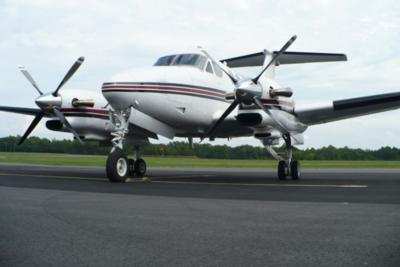Mon, Feb 12, 2018
Possible Engine Failure Can Result From Improper Fuel Management
The FAA has issued a Safety Alert For Operators (SAFO) following a boost pump failure aboard a Beechcraft King Air 90- series airplane.

The FAA noted in Safety Recommendation (SR) 16.127 that a boost pump failure in King Air 90-series airplanes leading to automatic crossfeed operation could result in dual engine failure if not managed properly by the pilot.
With a boost pump failure and the crossfeed switch closed, the High Pressure (HP) Fuel Pump on the side with the failed boost pump is able to suction-feed fuel from its Nacelle Fuel Tank and both engines continue to operate. During normal operation, the crossfeed switch is in the auto position and will automatically open in the event of boost pump failure.
If the boost pump fails, the emergency procedure in Section 3 of the Aircraft Flight Manual directs the pilot to momentarily close the crossfeed valve to determine which pump failed and then open it again, turning off the failed boost pump. The Emergency Checklist further states “If continued flight with the crossfeed closed is required”, CLOSE the crossfeed and monitor for power fluctuations. With a boost pump failure and crossfeed OPEN, fuel consumption is double the normal amount from the side with the operating boost pump. If improper fuel planning allows fuel to be depleted on that side, both engines will most likely flameout while usable fuel remains in the tanks on the side of the inoperative boost pump.
If that happens, options become limited. If the crossfeed valve is subsequently closed manually, the HP Fuel Pump on the side of the inoperative boost pump may still suction-feed, but if crossfeed remains OPEN, the HP fuel pump may instead only suction air through the empty crossfeed line. There is no engineering data to determine either way. As such, there is clear risk that a simple boost pump failure, if not managed properly, could result in dual engine failure.
Recommended Action
During training and operation, King Air 90-series owners, operators, and training departments/centers should emphasize the following:
- In the event of boost pump failure, if the pilot chooses to continue flight with the crossfeed valve OPEN, adequate fuel quantity should be verified on the side with the operating boost pump considering fuel burn on that side will be double with the crossfeed OPEN.
- In the event of boost pump failure, if crossfeed remains OPEN and fuel is depleted on the side with the operating boost pump, a DUAL engine Flameout will most likely occur.
- In the event of boost pump failure, the crossfeed valve must be CLOSED for the HP Fuel Pump to scavenge-feed fuel from the side of the inoperative boost pump.
- In the event of boost pump failure, proper fuel monitoring and management is crucial to avoid fuel starvation leading to engine failure and/or fuel imbalance beyond limitations.
(Image from file)
More News
19-Year-Old Pilot Was Attempting to Fly Solo to All Seven Continents On his journey to become the first pilot to land solo on all seven continents, 19-year-old Ethan Guo has hit a >[...]
From 2017 (YouTube Edition): A Quality LSA For Well Under $100k… Aeroprakt unveiled its new LSA at the Deland Sport Aviation Showcase in November. Dennis Long, U.S. Importer>[...]
Hazardous Weather Information Summary of significant meteorological information (SIGMET/WS), convective significant meteorological information (convective SIGMET/WST), urgent pilot>[...]
Aero Linx: Historic Aircraft Association (HAA) The Historic Aircraft Association (HAA) was founded in 1979 with the aim of furthering the safe flying of historic aircraft in the UK>[...]
"We would like to remember Liam not just for the way he left this world, but for how he lived in it... Liam was fearless, not necessarily because he wasn't afraid but because he re>[...]
 TikToker Arrested After Landing His C182 in Antarctica
TikToker Arrested After Landing His C182 in Antarctica Classic Aero-TV: Versatile AND Practical - The All-Seeing Aeroprakt A-22 LSA
Classic Aero-TV: Versatile AND Practical - The All-Seeing Aeroprakt A-22 LSA ANN's Daily Aero-Term (06.27.25): Hazardous Weather Information
ANN's Daily Aero-Term (06.27.25): Hazardous Weather Information ANN's Daily Aero-Linx (06.27.25)
ANN's Daily Aero-Linx (06.27.25) Aero-News: Quote of the Day (06.27.25)
Aero-News: Quote of the Day (06.27.25)



